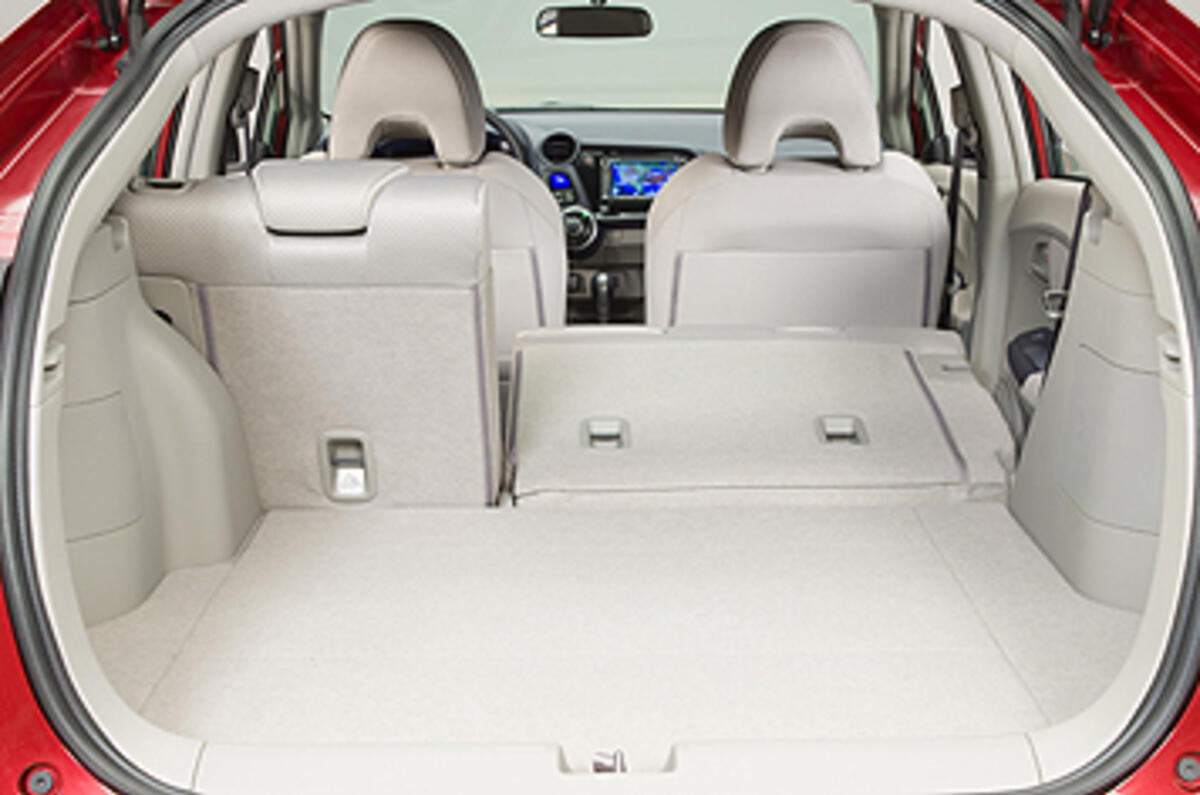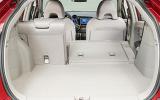What is it?
This is the new Honda Insight. The Insight is Honda’s second stab at a bespoke hybrid model, rather than a hybrid powertrain dropped into an existing model like the Civic.
Unlike the first-generation Honda Insight, the funky and frugal but largely useless coupe that appeared back in 1999, the new Insight is supposed to appeal to economy-conscious mainstream buyers and not just ardent tree-huggers.
This time, the Honda Insight unabashedly takes on the Toyota Prius, copying its five-door hatchback packaging, snub nose, sharply raked windscreen, curved roof line and truncated rear end.
Just like the original Honda Insight and every Honda hybrid since, the new Insight is powered by Honda’s Integrated Motor Assist (IMA) hybrid system. This consists of a small petrol engine, an electric motor, a compact battery pack and a regenerative braking system.
That’s not to say that the IMA was lifted directly from the Civic and plopped under the Insight’s low-rise bonnet. Although it’s fundamentally the same system, the Insight’s IMA weighs only 38kg, some 28 per cent less than the Civic’s version.
Honda claims that the Insight IMA is 30 per cent more efficient, which allows for fewer batteries (84 D-cells rather than 132, to be exact), and that it has 30 per cent greater durability. A CVT is the only gearbox on offer, incidentally, although the top-spec EX trim does get shift paddles.
The 1.3-litre VTEC four-cylinder is mated to a continuously variable transmission and produces 87bhp at 5800rpm and 91lb ft at 4600rpm. The electric motor adds 13bhp (or 10kW) at 1500rpm and 58lb ft of torque at 1000rpm.
Under the boot floor lies what Honda calls the Intelligent Power Unit. This consists of the battery pack, the power control unit, the electric motor, and a cooling system.
What’s it like?
At heart, the Honda Insight is similar to any other small Honda. The ergonomics are first rate, and the optional navigation screen interface is top-notch. Interior materials are not exactly sumptuous, but they’re inoffensive. The front seats are comfortable, and the rears have just enough room for two adults to sit happily for short city runs.
Unlike the Toyota Prius, which moves away from a stop with eerie quietness on solely electric power, the Honda Insight draws on its internal combustion engine from the beginning, so it sounds and feels quite conventional.
The electric power steering feels a bit dead around the straight-ahead, but it tightens up nicely with a bit of lock. Body control and ride quality are impressive, and the brake pedal has a nice linear quality.
Honda expects that the US EPA will rate the Insight at 40/43mpg city/highway (48mpg and 52mpg in UK money). Simply select the economy mode, which diminishes the air-con, optimises the throttle and the CVT, and engages the idle-stop feature sooner; then be gentle with your right foot. Over a 52-mile stretch of mostly two-lane roads, we achieved 56.5mpg.
Should I buy one?
Yes, if you like to advertise your green credentials, or if you’ve been waiting for a cheaper hybrid. But if all you really care about is using less fuel, you could always buy a Jazz and send some of the money you save to Greenpeace.





















Join the debate
Add your comment
Re: Honda Insight
I disagree - I think the Honda is just as good looking. The 3rd gen prius really isn't anything drastically different looks wise. While it may boast a better mpg figure, the prius is also going to cost significantly more. I think both will have a market, but credit to Honda for what appears to be a decent effort
Re: Honda Insight
Well done Honda for launching such a relevant vehicle. Makes a change from the stories about bigger engines, more horsepower etc. When the other headlines are of redundancies, closures, and the collapse of our economy this is the type of vehicle which should sell well. Now, could somebody please bid for my local Honda dealer chain, which is in receivership. I need somewhere to trade in the wife's CRV.
Re: Honda Insight
I think the best selling point for the Insight is probably its price - hybrids have been quite pricey up to now but this is more in line with conventionally powered and similarly sized vehicles. It still remains for an IMA Jazz diesel to create a proper headline economy figure. How about 100mpg? The milestone would surely generate plenty of publicity and it must be achievable given a light enough vehicle and advanced enough powertrain.